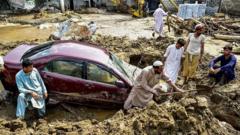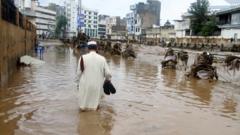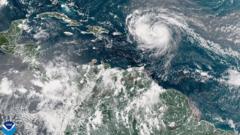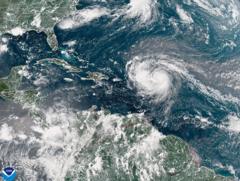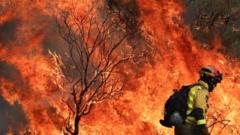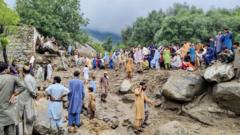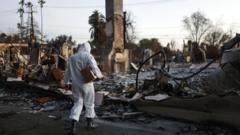As climate change continues to escalate, rainfall patterns are shifting dramatically, with the Eastern U.S. experiencing more intense precipitation. This phenomenon underscores the broader implications of rising global temperatures on weather systems, prompting scientists to warn about the severity of future storms.
Intensifying Rainfall and Climate Change: A Growing Concern for Eastern States

Intensifying Rainfall and Climate Change: A Growing Concern for Eastern States
Recent severe storms across the central and southeastern U.S. are part of a troubling trend of increasing rainfall in the Eastern region, linked to climate change.
The recent storm system that has afflicted the central and southeastern United States brings urgent attention to a notable trend in weather patterns attributed to climate change. Across the eastern half of the nation, precipitation has been increasing significantly over the years, contrasting with a decline in the Western US. According to data from the National Oceanic and Atmospheric Administration (NOAA), rainfall averages from 1991 through 2020 outstrip those of the prior century, supporting predictions that a warming climate causes wet areas to become wetter while dry regions face aridity.
Warm air holds more moisture, leading to heavier rainfall during storms. Although it is challenging to directly link a single storm event to climate change, scientists affirm that rising temperatures contribute to more intense weather phenomena. This trend is alarming as the last decade has seen the hottest global temperatures recorded in nearly 200 years, as noted by the World Meteorological Organization.
Deanna Hence, an associate professor specializing in climate meteorology and atmospheric sciences, emphasizes the correlation between heavy rain events and climate trends, indicating a clear pattern of worsening extremes. As the situation persists, discussions around climate policy and environmental protection are likely to intensify, reflecting the urgent need for adaptive strategies and global cooperation on climate action.
As these patterns continue to unfold, it becomes ever more critical for communities to prepare for the consequences of escalating hydraulic events, emphasizing the importance of understanding and responding to the ongoing impacts of climate change on our environment and lifestyle.


